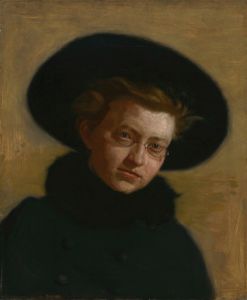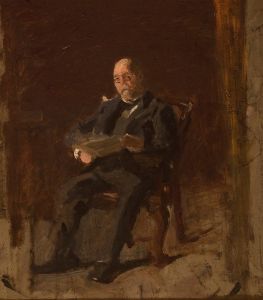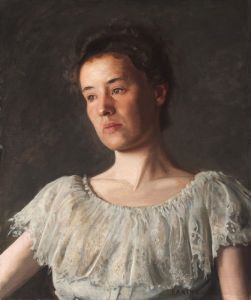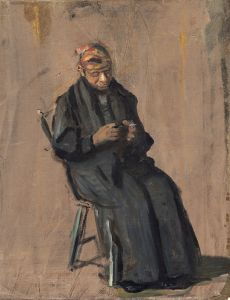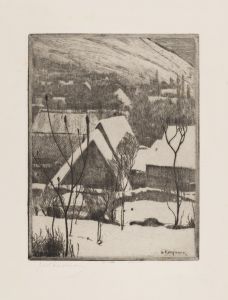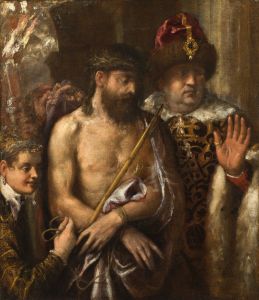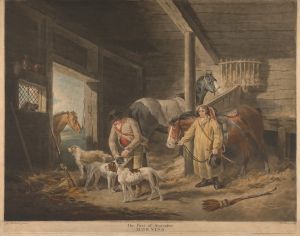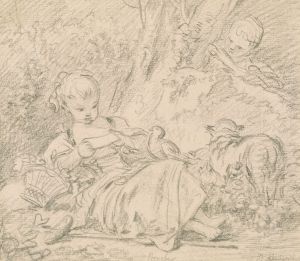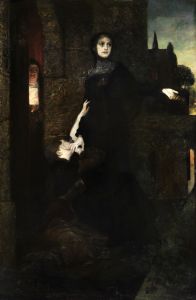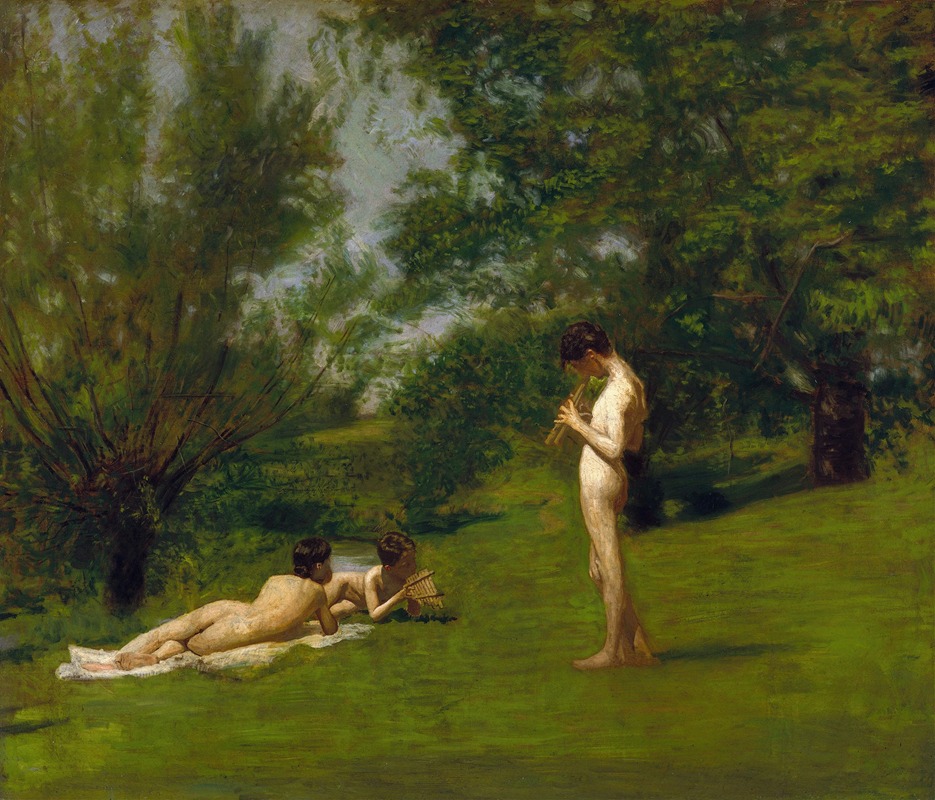
Arcadia
A hand-painted replica of Thomas Eakins’s masterpiece Arcadia, meticulously crafted by professional artists to capture the true essence of the original. Each piece is created with museum-quality canvas and rare mineral pigments, carefully painted by experienced artists with delicate brushstrokes and rich, layered colors to perfectly recreate the texture of the original artwork. Unlike machine-printed reproductions, this hand-painted version brings the painting to life, infused with the artist’s emotions and skill in every stroke. Whether for personal collection or home decoration, it instantly elevates the artistic atmosphere of any space.
"Arcadia" is a painting by the American artist Thomas Eakins, completed in 1883. Eakins, known for his realistic portrayal of the human figure and his interest in anatomy, was a leading figure in American art during the late 19th century. His work often explored themes of nature, the human body, and the intersection of the two, reflecting his deep engagement with both the artistic and scientific communities of his time.
The painting "Arcadia" depicts a serene and idyllic landscape, a theme that has been a part of Western art since antiquity. The term "Arcadia" itself refers to a region in Greece that was idealized in art and literature as a pastoral paradise, a place of unspoiled wilderness and simple, harmonious living. Eakins' interpretation of this theme is consistent with his broader artistic goals, which often involved a detailed and realistic portrayal of his subjects.
In "Arcadia," Eakins presents a group of figures in a natural setting, engaged in leisurely activities. The figures are depicted with Eakins' characteristic attention to anatomical detail, a skill he honed through his studies in anatomy and his use of photography as an aid in capturing the human form. The painting reflects Eakins' belief in the importance of direct observation and his commitment to portraying the human body with accuracy and truthfulness.
The composition of "Arcadia" is carefully balanced, with the figures integrated into the landscape in a way that suggests harmony between humanity and nature. This integration is a hallmark of Eakins' work, as he often sought to depict his subjects in a way that emphasized their connection to their environment. The use of light and shadow in the painting further enhances this sense of unity, creating a tranquil and contemplative atmosphere.
Eakins' "Arcadia" is also notable for its use of color and texture. The palette is subdued, with earthy tones that reinforce the natural setting and contribute to the overall mood of the piece. The brushwork is meticulous, reflecting Eakins' dedication to capturing the subtleties of light and form.
While "Arcadia" is not as widely known as some of Eakins' other works, such as "The Gross Clinic" or "The Swimming Hole," it remains an important example of his approach to painting and his philosophical engagement with the themes of nature and humanity. The painting exemplifies Eakins' commitment to realism and his belief in the power of art to convey truth and beauty.
Throughout his career, Eakins faced both acclaim and controversy, often pushing the boundaries of what was considered acceptable in art at the time. His focus on the human form, sometimes in the nude, and his use of photography as a tool for study were subjects of debate among his contemporaries. However, his contributions to American art have been recognized as groundbreaking, and his influence can be seen in the work of many artists who followed.
In summary, Thomas Eakins' "Arcadia" is a testament to his skill as a painter and his dedication to exploring the relationship between humans and their natural surroundings. The painting captures a moment of peace and simplicity, inviting viewers to reflect on the beauty of the natural world and the place of humanity within it.







